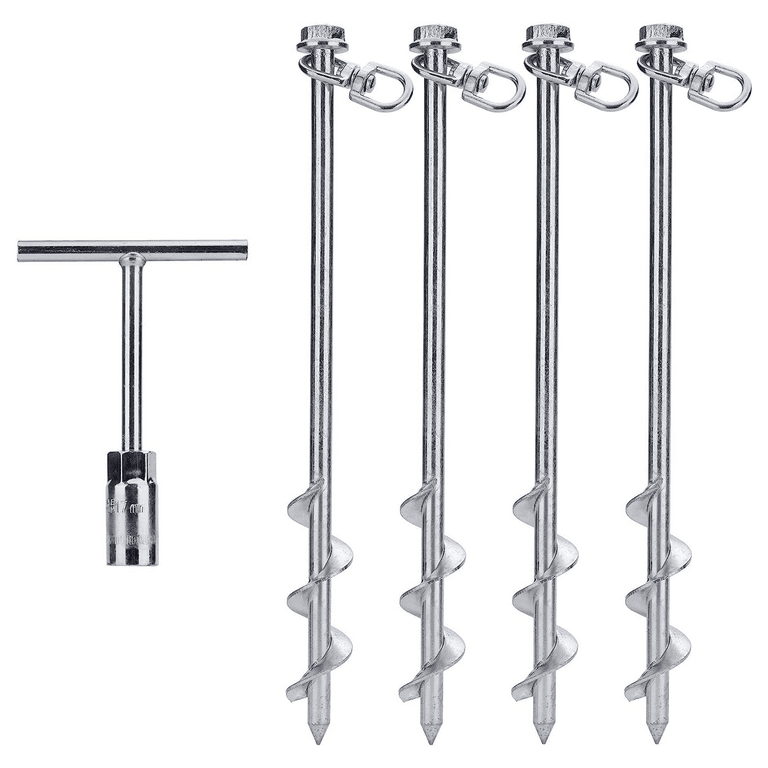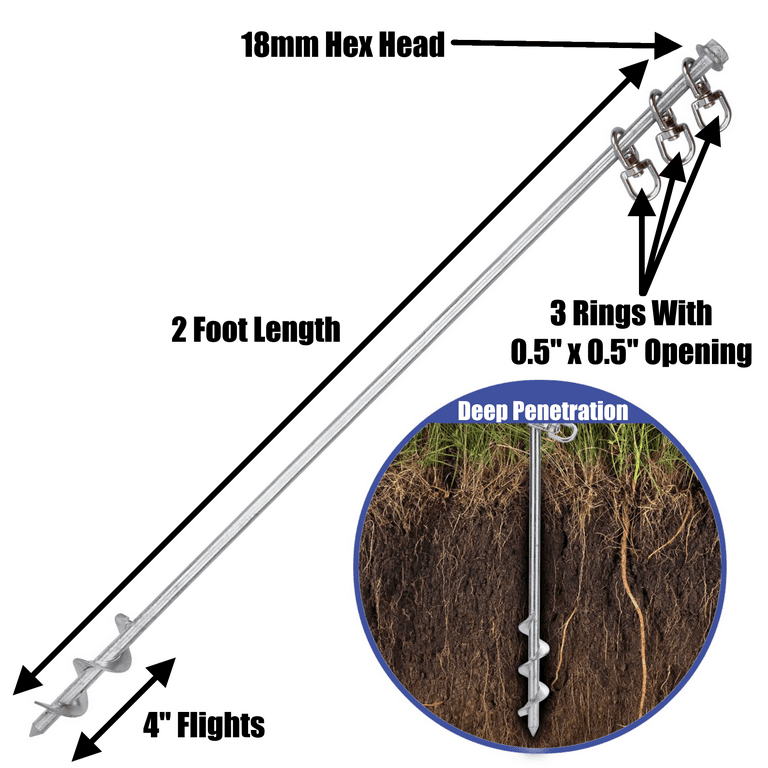Check Out the Various Kinds Of Ground Support for Your Next Task
From auger supports, which succeed in varied soil conditions, to stake supports made for short-term installments, the alternatives are many. Additionally, concrete and screw anchors existing unique benefits in certain circumstances, while deadman anchors are tailored for applications needing resistance to side forces.

Auger Anchors
Auger anchors are a preferred choice in different construction and landscape design tasks due to their special style and reliable anchoring capacities. These supports contain a helical screw-like shaft that is driven into the ground, permitting a safe and secure and secure hold. The spiral layout helps with easy installment and takes full advantage of resistance versus lateral forces, making auger anchors particularly reliable in applications such as fencing, short-term frameworks, and disintegration control.
The installation procedure of auger anchors is relatively uncomplicated. Auger supports can be easily eliminated and reused, which includes to their cost-effectiveness and sustainability.
Among the substantial benefits of auger supports is their capacity to distribute lots uniformly throughout the bordering soil, lowering the risk of soil disruption and lessening ecological influence. Furthermore, they are much less prone to heaving or loosening in time compared to typical anchoring approaches. Subsequently, auger supports are an exceptional option for projects calling for long lasting and reliable anchoring remedies.

Risk Anchors
When it involves securing frameworks in a selection of outside applications, risk supports supply a uncomplicated and reliable remedy. These anchors are usually constructed from resilient materials such as steel or light weight aluminum, made to stand up to environmental stress and anxieties while offering ideal stability. Their easy style enables quick setup, making them a suitable option for permanent or short-term anchoring needs.
Risk supports are particularly beneficial in protecting tents, canopies, and other lightweight frameworks versus wind and weather. They function by being driven right into the ground at an angle, producing a solid hold that withstands pull-out forces - Ground Anchor. The effectiveness of stake anchors depends on several aspects, including soil kind, wetness web content, and the angle of installment
For added protection, numerous risk anchors come with attachment points for bands or ropes, enabling tension adjustments as needed. In applications such as landscaping or building and construction, they can successfully maintain equipment or frameworks on uneven surface. Overall, risk anchors supply a affordable and versatile solution for securing numerous outdoor setups, making them a preferred selection for service providers and do it yourself lovers alike.
Concrete Anchors
Concrete anchors provide a robust option for safeguarding structures to concrete surfaces, ensuring stability and safety in different applications. These supports are crucial for jobs ranging from property constructions to large-scale industrial installments. They come in various types, consisting of development supports, sticky anchors, and undercut supports, each designed for specific load requirements and ecological problems.
Sticky anchors utilize high-strength epoxy or material to bond the anchor to the concrete, supplying exceptional load-bearing capacities, especially in fractured concrete scenarios. Undercut anchors develop an unique shape within the concrete, offering extraordinary holding power, particularly in applications where tensile loads are prevalent.
When implemented appropriately, concrete anchors significantly enhance the structural honesty of different jobs, making them important in modern-day construction methods. Comprehending the particular demands of your job will help in picking the ideal kind of concrete anchor for the task.
Screw Anchors

Screw anchors are a versatile fastening option that can be properly employed in a selection of applications where traditional concrete anchors might not suffice. These anchors include a helical style that allows them to be easily driven right into the ground, making them optimal for usage in dirt and various other substrates. Their unique structure offers excellent holding power and resistance to pull-out forces, making them suitable for countless tasks, from landscape design to architectural assistance.
One of the main benefits of screw supports is their ease of installation. They require marginal equipment and can commonly be installed without the need for excavation, which saves both time and labor expenses. In addition, screw supports can be gotten rid of and reused, using a lasting service for temporary applications.
Screw anchors are specifically advantageous in areas where dirt problems are testing, such as loosened or sandy dirts. Their ability to be set up at differing midsts enables modification based upon specific job demands. Overall, screw anchors provide a reliable and trustworthy securing technique, making them an excellent choice for service providers and engineers looking for efficient services for their jobs.
Deadman Anchors
Deadman anchors function as a durable remedy for maintaining structures in difficult problems, specifically where standard securing methods might fail. These anchors are composed of large, heavy things buried underground, which develop resistance against lateral forces. The style commonly involves a horizontal part, such as a block of concrete or a metal plate, hidden in the soil, to which straps or cable televisions are attached.
The performance of deadman anchors depends on their ability to disperse loads over a bigger location, minimizing the risk of failure in unstable dirt problems. They are specifically valuable in applications such as keeping walls, short-term structures, and slope stablizing, where soil activity can compromise the stability of the structure.
Installment of deadman supports get more requires careful preparation to ensure they are placed at the correct depth read this article and orientation, optimizing their load-bearing capability. While they might need even more labor and material than light-weight supports, their dependability in damaging problems makes them indispensable for long-term tasks. Additionally, deadman anchors are flexible and can be adapted to various applications, making them a go-to option for designers facing special challenges in their tasks.
Final Thought
Auger supports excel in varied dirt conditions, while risk anchors fit short-lived applications. For concrete surface areas, growth and sticky supports supply dependable alternatives, and screw anchors offer convenience in challenging surfaces.
In addition, concrete and screw anchors existing distinct benefits in specific scenarios, while deadman supports are customized for applications requiring resistance to side forces - Ground Anchor.Auger anchors are a preferred selection in numerous building and construction and landscaping additional reading jobs due to their special layout and reliable securing capacities. They come in different kinds, consisting of growth anchors, adhesive anchors, and undercut anchors, each made for certain lots requirements and environmental conditions
Glue anchors make use of high-strength epoxy or material to bond the support to the concrete, using premium load-bearing capacities, specifically in split concrete scenarios. In general, screw supports provide a reputable and efficient anchoring approach, making them an exceptional option for professionals and designers seeking effective services for their projects.